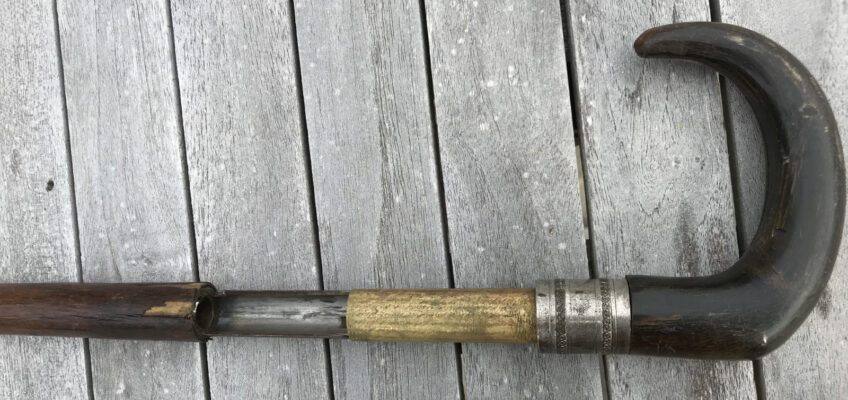Recently we were asked to take possession of a rather interesting family heirloom, a .410 walking stick shotgun dating back to the early 1900’s.
This made a pleasant change to the usual section 5 prohibited weapons that we deal with and it was a pleasure to meet the current owner who inherited it from his grandfather who was sadly killed during the first world war. His wish was to be able to have it proudly displayed in the family home.
The cane was certainly in need of some tender loving care however the more immediate matter of deactivation had to be addressed prior to any restoration work being carried out. By virtue of the Firearms Act, 1968, section 5(1A)(a) this is categorised as a “firearm disguised as another object” and as such cannot be possessed without authority being granted by the Home Office. Despite being a shotgun the fact that it is disguised as a walking stick renders it liable to Section 5 prohibition.
The process of deactivation is further complicated as the gunsmith undertaking the work is also required to be authorised by the Home Office. Stricter conditions relating to the actual process of deactivation have recently come into place and extreme care has to be taken whilst permanently rendering the item inoperative not to ruin the aesthetic qualities of the gun. Once the necessary work has been carried out the gun can then be submitted to one of the two proof houses for testing and certification. The gun is stamped and a certificate issued after which it can be possessed without a certificate and can be placed on open display. The intention with this particular piece is to have the barrel re laminated and also a missing section of wood around the breech replaced after which it will be back to its former glory.
If you have a similar section 5 prohibited weapon that requires transportation or remedial work undertaken e.g. deactivation, then we would be pleased to receive your enquiry and to provide a no obligation quote for the various associated work.

